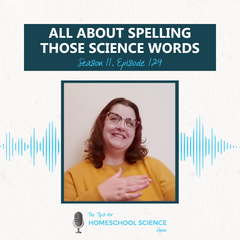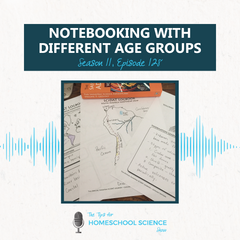FREE Shipping on all our products! (Please Note: Orders may experience a delay of a week or more in shipping due to the high volume of orders at this time of year.)
FREE Shipping on all our products! (Please Note: Orders may experience a delay of a week or more in shipping due to the high volume of orders at this time of year.)
How to Homeschool as You Work from Home {Episode 95}
February 22, 2021 2 min read

I never intended to work from home and homeschool, but that's exactly what I have been doing for almost 15 years. And in that time, I have learned a few tricks to get done what needs to be done, which I am sharing in this podcast!
Welcome to season 7 of the Tips for Homeschool Science Show, where we are exploring the how-to’s of teaching science at home so that you will have building blocks you need for homeschool science.
I am Paige Hudson, your guide through this journey. Let’s dig in…
Listen to this episode
You can also listen to this podcast on iTunes, Stitcher, or Spotify.
Share the Tips
If you found these homeschool science tips to be helpful, would you please take a moment to rate it in the podcasting app you use to listen to the show? This would help me tremendously in getting the word out so that more earbuds are filled with science-teaching encouragement.
Episode 95 - How to Homeschool as You Work from Home
If you want to know more about the story of how I became a work-from-home homeschooler, you can find the story of our business here.
Timestamps
Here is what you'll find in this episode:
(0:36)
The quick version of my journey to become a work-from-home homeschooler.
- We didn't plan to homeschool and work from home
- But that's exactly what we have been doing for almost 15 years
(1:23)
The number one thing I have learned to handle combining work and homeschool is to give yourself grace.
- There will be things that you want to do that you don't have time to do - give yourself grace.
- There will be days that don't go as planned - give yourself grace.
- Realize that this is just a season and give yourself the grace you need to enjoy it!
(2:21)
The second thing I have learned is to have my day laid out in time blocks.
- I don't do well with minute-by-minute schedules, so I use blocks of time.
- The first block sets the tone for the rest of my day and then comes work, homeschool, work, and family time.
- I know that my days will follow a set flow.
(4:08)
The third thing I have learned is to get help.
- The reality is that you can't do it all.
- Decide your priorities and then get help for the rest.
- If you can't afford help, let things go.
- "Everything is figureoutable!!" - Marie Forleo
(6:26)
The final word...
- You can work from home and homeschool!
(7:00)
Get help for teaching science at home with our programs.

Also in {Podcast} The Tips for Homeschool Science Show
All About Spelling Those Science Words {Season 11, Episode 129}
March 25, 2024 7 min read

In this episode, we'll be interviewing Robin Williams from All About Spelling. Click "Read More" to listen is as we discuss tips and tricks for spelling all those science words!
How should you handle notebooking through the different ages? {Season 11, Episode 128}
March 18, 2024 3 min read

Writing in Science with a Well-Trained Mind (Interview) {Season 11, Episode 127}
March 11, 2024 16 min read

Click "Read More" to listen in as Susan Wise Bauer and Susanna Jarret join Paige to share tips and tools about the third key to teaching science!
Subscribe
Sign up to get the latest on sales, new releases and more …

